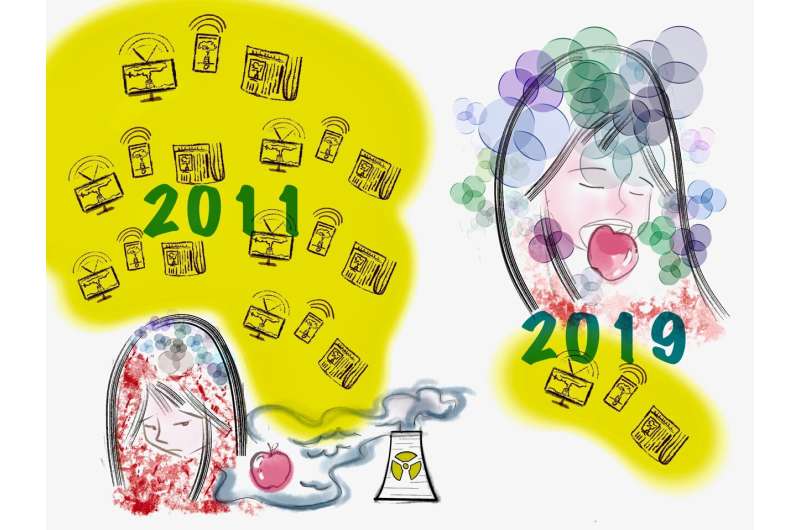This article has been reviewed according to Science X's editorial process and policies. Editors have highlighted the following attributes while ensuring the content's credibility:
fact-checked
trusted source
proofread
Attitudes toward possible food radiation contamination following the Fukushima nuclear accident

Over time, reason strengthens, memories fade, and fear subsides.
The food contamination that followed the Fukushima nuclear plant incident in 2011 caused widespread fear, both within Japan and internationally. Unfortunately, the emotional response far outweighed rational decision-making at the outset of the crisis when long-term effects were still difficult to predict.
Now, a nine-year study led by Kyoto University shows swapping trends in anxiety and food avoidance among surveyed citizens in the Tokyo metro area, as well as in the Kansai region.
"At the start of our ten-wave survey, mothers, in particular, proactively sought information about food from the affected area through an intuitive decision-making process based on empirical thinking," says lead author Takashi Kusumi of KyotoU's division of cognitive psychology in the graduate school of education.
Kusumi's team then observed a gradual decrease in food avoidance. At the same time, logical decision-making promoted intelligent attitudes and risk literacy, such as knowledge of radioactivity, media literacy, and scientific literacy.
"Credibility of government information about food safety began at a considerably low level, but it eventually saw a moderate increase," Kusumi adds.
In addition, there were regional differences in active information-seeking behavior, practical knowledge about radiation, and suppression of food avoidance among the 1,752 citizens surveyed. All these decreased among residents in areas becoming progressively distant from the disaster: from Fukushima to Tokyo and further to the Kansai region.
Statistical tools, such as multiple regression analysis, cross-lagged analysis, and structural equation modeling, were used to highlight two concurrent systems: experiential thinking, describing avoidance of foods from affected areas prompted by anxiety related to radioactive contamination; and analytical thinking, revealing suppression of the emotional reaction by a process of critical thinking.
"Interestingly, the latter process appeared relatively weak compared to the effects of anxiety immediately after the accident, but gradually strengthened over time," remarks Kusumi.
The work is published in the Journal of Risk Research.
More information: Takashi Kusumi et al, Attitudes toward possible food radiation contamination following the Fukushima nuclear accident: a nine-year, ten-wave panel survey, Journal of Risk Research (2023). DOI: 10.1080/13669877.2023.2181856


















